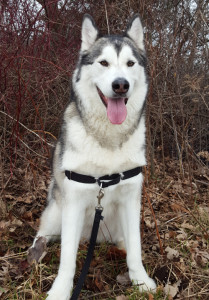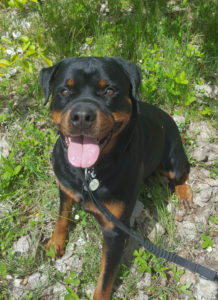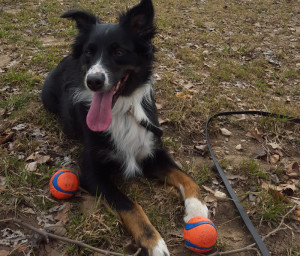Our Dog Walking Equipment and Care Policies
Sit. Smile. Wag.
Your dog’s mental health and safety comes first! That is why we have rigorous Dog Handler safety policies and equipment policies to ensure that both the dog, and the walker, enjoy their time hitting the trails and sidewalks.
We believe firmly in our walking equipment policies, and our insurance provider agrees with us. There will be no use of prong/pinch, choke, or shock collars while walking a client’s dog due to the potential for injury (physical or mental) to the dog. There will also be no use of retractable/flexi-leashes while under our care, as these devices have been known to fail and pose a risk to anyone, human or canine, that may get wrapped up in them.
* If the owner has no substitute for a prong or choke chain, then the agreement to provide services will still move forward provided that the owner agrees to allow us to provide a more suitable collar/harness for walking their dog and a willingness to consider purchasing the alternative for themselves.
 Our goal is to ensure that all dogs under our care enjoy the walk as much as we do and so, we have a strict policy against the use of fear when handling a client’s dog.
Our goal is to ensure that all dogs under our care enjoy the walk as much as we do and so, we have a strict policy against the use of fear when handling a client’s dog.
For dogs who have basic leash manners and are not reactive when on lead, we use (and encourage the use of) front-clipping harnesses. These harnesses are comfortable for the dogs but still provide the handler with a way to redirect the dog back towards them if the dog starts to pull. These harnesses do restrict the front motion of the dog, making them less ideal for lengthy hikes or running but are perfectly safe for an hour walk or less.
For dogs who have basic leash manners but are reactive when on lead, we use a K-9 Bridle. For a reactive dog who get too worked up over something, this puts both the dog and the handler at risk if the dog can overpower the handler and pull them towards the object of the dog’s attention.  This style of head halter, a UK design, is very similar to a Gnetle Leader or Halti with some important differences. The bridle attaches behind the dog’s head, rather than under their chin, this ensures that the dog’s head is not jarred to the side and the strap over the nose does not ride up into the dog’s eye. The bridle is also loose fitting, only tightening as the dog pulls strongly to ensure the dog does not slip it off. This head halter allows the handler to stand firm and either work with the dog in place or remove them from the situation and work with them at an appropriate distance.
This style of head halter, a UK design, is very similar to a Gnetle Leader or Halti with some important differences. The bridle attaches behind the dog’s head, rather than under their chin, this ensures that the dog’s head is not jarred to the side and the strap over the nose does not ride up into the dog’s eye. The bridle is also loose fitting, only tightening as the dog pulls strongly to ensure the dog does not slip it off. This head halter allows the handler to stand firm and either work with the dog in place or remove them from the situation and work with them at an appropriate distance.
The use of a head halter should be temporary and used in conjunction with proper training to reduce the level of the dog’s reactivity. Once the dog is less reactive, we upgrade the dog to a front-clipping harness.
Sit. Smile. Wag.
When your dog is under our care and away from your home, it will be leashed at all times. Insurance companies for services such as ours do not cover us if an incident happens while your dog is off-leash and away from home, and for good reason. It is irresponsible and unprofessional to allow someone else’s dog off-leash while under a pet care provider’s supervision. As any professional and knowledgeable dog trainer will tell you, we trust our dogs to “be dogs” 100% of the time, no matter the amount of training that has gone on. There maybe times when a dog’s instincts simply take over and that is a risk no one should take with the beloved pet of someone else.

